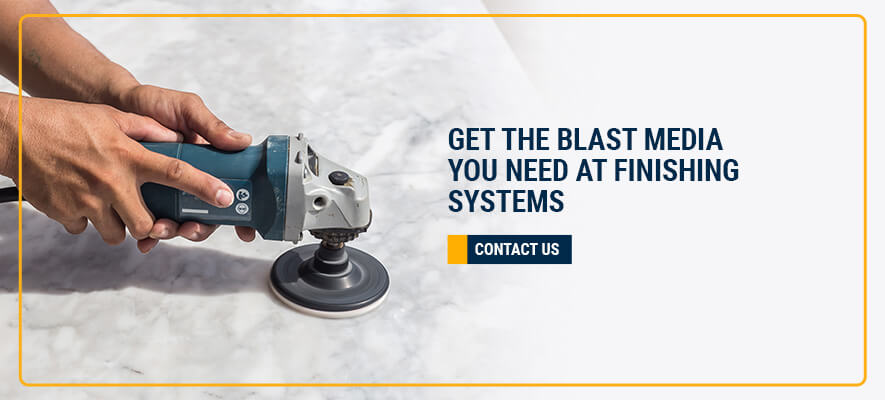In industrial and finishing applications, blasting media plays a crucial role in stripping, cleaning, and polishing surfaces to achieve a professional finish. Two of the most commonly used abrasives are aluminum oxide and silicon carbide. While both are effective and cost-efficient, they have distinct properties that make them better suited for different materials and tasks. Aluminum oxide is one of the most widely used blasting media, especially for painted surfaces, wood, and various metals. It’s known for its affordability, durability, and long-lasting performance. This abrasive comes in three main colors — pink, white, and brown — each with specific uses and benefits. White and pink aluminum oxide are ideal for achieving smoother finishes compared to the brown variety. White aluminum oxide is particularly effective on wood and lacquered surfaces, as it generates less heat and performs well in precision work. Pink aluminum oxide is often used on softer woods or for sharpening and grinding operations. However, these types tend to be less durable than their brown counterparts. Brown aluminum oxide is best suited for harder materials due to its high durability and resistance to wear. Its grains are semifriable, meaning they self-sharpen as they break down, making them efficient for removing larger burrs and leaving behind finer particles for a smoother finish. Brown aluminum oxide is also highly recyclable, which makes it a cost-effective option for repeated use. Silicon carbide is known for its extreme hardness and sharp edges, making it an excellent choice for materials like ceramics, glass, stone, marble, and certain plastics. It can be used multiple times before needing replacement, especially on softer materials. Additionally, it provides good etching and surface preparation for coatings. However, its hardness can lead to faster wear when used on harder materials such as steel. That’s why it’s not typically recommended for metal grinding unless combined with other abrasives. Silicon carbide is also versatile, working well in both direct-pressure and suction-based systems. It can be paired with aluminum oxide for optimal results — using the latter for general cleaning and the former for fine polishing. Another advantage of silicon carbide is its safety in wet or volatile environments. It doesn’t produce static electricity, which reduces fire risks, and it has minimal magnetism. It's available in both friable and non-friable forms, giving users more control over wear and performance. When it comes to grinding steel, aluminum oxide is generally the better choice. Although silicon carbide is harder, it is also more brittle, leading to rapid wear on hard surfaces like steel. Using silicon carbide on steel would require multiple passes to see any significant effect, making it less efficient. Brown aluminum oxide is the best option for steel due to its durability and ability to provide a smooth finish. You can follow up with pink aluminum oxide for further refinement if needed. Aluminum is a soft metal, so it requires a balance between hardness and heat control. A combination of aluminum oxide and silicon carbide is often ideal. Silicon carbide is great for low-tensile strength metals like aluminum because it minimizes heat generation while still delivering a consistent finish. White aluminum oxide is particularly suitable for aluminum surfaces, as it offers precision without excessive heat. Some applications may benefit from starting with aluminum oxide for initial cleaning and then switching to silicon carbide for final polishing. Your choice between aluminum oxide and silicon carbide depends on the material you're working with. For non-metallic or low-tensile strength materials, silicon carbide is usually the way to go. For high-tensile strength materials like steel, bronze, or aluminum alloys, aluminum oxide is more appropriate. Using a combination of both can be beneficial in precision finishing. This approach is especially useful in aluminum grinding and woodworking, where a two-step process leads to better results. If you're looking for high-quality blasting media tailored to your specific needs, Finishing Systems has you covered. We offer a wide range of aluminum oxide and silicon carbide products, including friable, semi-friable, and standard varieties for maximum versatility. Whether you're working on metal, wood, or other materials, our team can help you find the right solution. Don't hesitate — contact us today to learn more about how we can support your blasting and finishing projects. Creasing Rule,Creasing Rule For Flat Bed,Flat Bed Cutting 2Pt,3Pt 23.3Mm Creasing Rule Jiangyin Mitoo Precise Co.,Ltd. , https://www.mitoosteel.com
Aluminum Oxide vs. Silicon Carbide
Updated: November 24, 2023
Aluminum Oxide Abrasives
Pink and White
Brown
Silicon Carbide Abrasives
Which is Better for Grinding Steel?
Which is Better for Grinding Aluminum?
How to Choose Between the Two

Get the Blast Media You Need at Finishing Systems